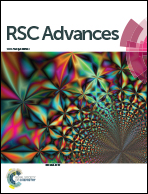Nanoincorporation of curcumin in polymer-glycerosomes and evaluation of their in vitro–in vivo suitability as pulmonary delivery systems
Abstract
The aim of this work was to deliver curcumin into the lungs by incorporating it into innovative vesicles obtained using phospholipids and high concentrations of glycerol (50%, v/v), so called glycerosomes, which were then combined with two polymers: sodium hyaluronate and trimethyl chitosan to form polymer-glycerosomes. These systems were prepared without the use of organic solvents or acidic solutions and their physico-chemical properties were fully characterized. Cryogenic transmission electron microscopy and small-angle X-ray scattering showed that both glycerosomes and polymer-glycerosomes were spherical, mainly unilamellar and of nanometric size (65–112 nm). The vesicles were readily nebulized with the largest amount of curcumin being found in the latest stages of the Next Generation Impactor™. In vitro results revealed the high biocompatibility of samples especially those containing the polymers. Curcumin loaded vesicles were also able to protect in vitro A549 cells stressed with hydrogen peroxide, restoring healthy conditions, not only by directly scavenging free radicals but also by indirectly inhibiting the production of cytokine IL6 and IL8. Moreover, in vivo results in rats showed the high capacity of these formulations to favour the curcumin accumulation in the lungs confirming their potential use as a target system for the treatment of pulmonary diseases.


 Please wait while we load your content...
Please wait while we load your content...